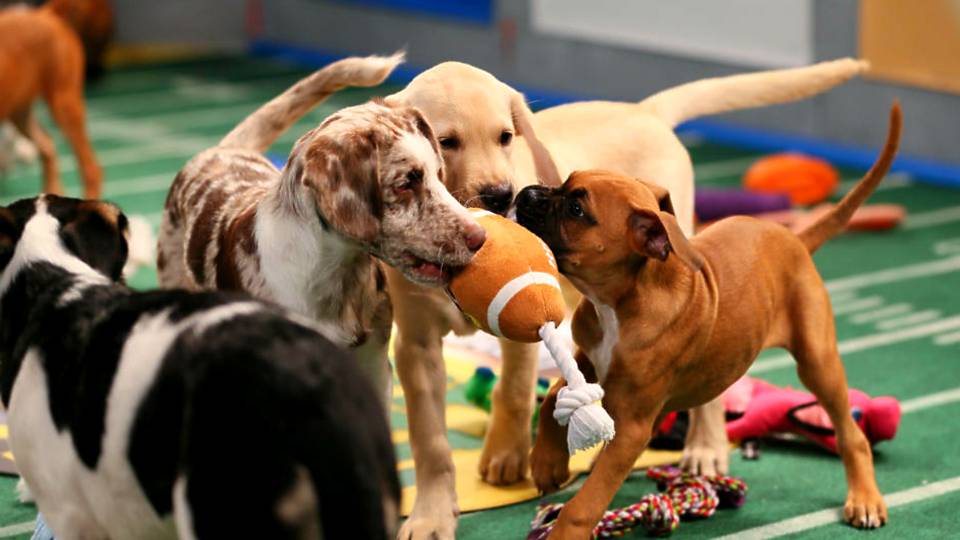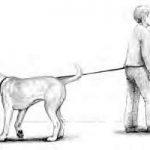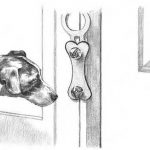Pre-Puppy Considerations

In This Chapter
- Asking yourself why you want a puppy
- Considering how a dog fits with your current and future family arrangements
- Figuring out what you want in a dog
- Fitting a puppy into your daily routine
Your puppy may be the only family member you get to handpick. You choose based on anything from looks to personality type. Make the most of it!
Why Do You Want a Puppy?
Travel considerationsWe can’t leave out the question of travel. Do you enjoy the flexibility of flying out on a moment’s notice? Does your career pull you away for days at a time? If you’re nodding your head yes, think this through. Do you have a friend or family member lined up who welcomes the responsibility of a puppy? Do they tolerate the adolescent mischief that strikes puppies from the ages of 7 to 11 months? Or, can you afford to pay someone to kennel your puppy or dog or to stay in your home while you’re away? Kenneling a dog can cost between $15 to $100 each day, depending on where you live and what extra bonuses you purchase to embellish your dog’s stay, such as extra walks, training lessons, or a deluxe suite. |
Remember
If the thought of midnight potty runs leaves you feeling cool to the idea of raising a puppy, perhaps you’d be better suited to adopt an older dog. Shelters are filled with them, and rescue clubs for specific breeds can be found easily by calling or visiting the American Kennel Club (www.akc.org). Even puppies older than 6 months are beginning to have better bladder control.
What’s Your Day Like?
Table 2-1 Making Room for a New Puppy | |
Joe’s Typical Day | Changes Joe Makes to His Schedule |
My alarm rings at 7 a.m. I often hit the snooze button a couple of times before getting up. I have to leave for work by 8:30 a.m. I’m usually rushing. | I’ll set the alarm for 6:30 a.m. (and not hit the snooze button!) and will walk, feed, and play with the puppy for 30 minutes. |
I usually come home on my lunch break for 30 minutes. I read the paper during this time and if it’s a nice day, I sit outside. | will come home on my lunch break and make the puppy a higher priority than reading the paper. On the days I can’t come home, I have contacted a local dog walking professional to come for the puppy’s midday outing and feeding. |
My mother comes over at 3 p.m. to watch the kids, who get off the bus at 3:30 p.m. | My mother is willing to help out pro vided that we find a breed she can manage. The kids have committed to playing with the puppy for 30 minutes before settling down to do homework and play computer games. |
My wife gets home at 5:30 p.m. She usually goes out for a walk with the kids or a run on her own. I get home 6:30 p.m. and we start dinner. | My wife is reorganizing her schedule to get home at 5:15 p.m. to take care of the puppy. She’ll start dinner earlier, postponing her run until I get home at 6:30 p.m. I will get dinner on the table. |
Dinner is on the table between 7:00 p.m. and 7:30 p.m. After dinner we either come together in the family room, or everyone goes off to play, work on the computer, or do homework. | Family time will be moved into the kitchen until the puppy is trained and won’t pee on the rugs in the rest of the house. The kids can do their homework on the table and hang out with the puppy. |
The kids go to bed at 8:30 p.m. My wife and I go into the bedroom by 9 p.m. and watch TV until 10 p.m. or 11 p.m. | I will be in charge of the last puppy outing at 11 p.m. |
My children have wanted a puppy since they could talk. Now they’re 7 and 9 years old and we feel ready for this challenge. We have a house and 1⁄2 acre of land in a busy neighborhood. Neither my wife nor I know anything about dogs, but we like them and want to make raising this puppy our family project. Even my mom, who is elderly and planning to move in with us in a few years, is excited. Her one condition is that we pick a breed that she can handle. We plan to fence the yard, and we’re all looking forward to taking the new puppy with us on family walks and to the kids’ activities.
Who’s under Your Roof?
Remember
Children add a lot of dynamics to anyone’s life: Your furry, four-legged child is no exception! If you’re a newly married couple eager to title your puppy as “our first child,” you’ll have to socialize your puppy extensively with babies so that he doesn’t feel displaced when you bring in your second, human child. Map out your life now, and then look five or ten years into the future to determine what breed will enjoy living with you over the long haul.
Just me
Tip
Most cafes frown upon inviting in anything but the human species. Walking, grooming, and feeding your puppy all require a mindfulness that leaves your carefree days in the dust. If you’re truly up for the challenge, remember that your puppy will be your responsibility for well over a decade. If you plan to fall in love and eventually share a household with someone of the opposite sex, socialize your puppy with that group so that he won’t get his hackles up when that special someone sweeps you off your feet. Also, think about whether you might have a family of your own some day. Choose a breed that enjoys children and start socializing that puppy with kids from the get-go! (Flip to Chapter Life from His Paws: Understanding Your Puppy’s View of the World for more on puppy socialization.)
Just us
Remember
Have a heartfelt talk with your honey, ideally before bringing your puppy home. Your topics of discussion should include:
– Where will the puppy sleep?
– What are your separate visions and hopes for adding a dog to your life?
– How will you share responsibilities, from feeding and walking to exercise and training?
– What are your feeding philosophies, from kibbles in the bowl to handouts from the table?
– How much money will you apportion to health maintenance, training, and grooming?
Warning!
Planning a family? Avoid protective, guard, or fighting breeds unless you’re committed to early socialization and training — and lots of it! I discuss these breeds in Chapter Picking the Right Kind of Puppy for You.
Tip
Maybe you’re retired empty nesters. That’s terrific because you’re probably home more often, which means you can be attentive to your puppy’s schedule. However, remember that a young puppy’s needs can be very demanding. If you already did the 4 a.m. diaper-changing thing, and you’d rather skip these experiences than relive them, consider an older puppy. Also pay close attention to the exercise requirements when choosing your puppy. You need to ensure that you and your soon-to-be-adult dog will be a solid match.
And baby makes four! (children under age 5)
Tip
Are you ready to take the plunge? If you’re getting a puppy to raise with your young children, you may suddenly feel like you have twins (only one may be slightly furrier than the other). Flip to Chapter Kids and Puppies for tips on raising kids and puppies together.
Warning!
If you have a needy toddler, postpone getting a puppy for at least a couple of years. Your child needs all your attention to develop a strong sense of self. A puppy not only will pull you away from your parental duties but will challenge and rival the toddler for your attention. This situation is a nightmare in the making. Introduce the puppy only when your child is more emotionally steady and is also excited and ready for the addition.
Us and a few more (families with children over age 5)
Remember
If you feel yourself about to cave, realize one thing: No matter how much your children promise to take part, the puppy will always be your responsibility. Kids can’t be expected to remember everything. Many still have to be reminded to tie their shoe or flush the toilet. Even though they take part in the daily responsibilities, you won’t be sidelined. You’ll be the coach, the cook, and the social director for your children and your new puppy.
Warning!
With all the chaos and comings and goings of a family with children, I caution you against protective or territorial breeds. These breeds may suffer from career stress when trying to keep track of all the activity in your home, and they may subsequently lash out at the unsuspecting children. Unless you can dedicate your family to a consistent and extensive training program, stick to roughand-tumble, ready-for-play breeds who accept everyone as long-lost friends.
A whole menagerie (other pets)
A variety of pets
Warning!
If you’re adding a dog to a household of other critters, spend a long time searching out a breed that isn’t genetically programmed to corral, maim, or kill those other critters. Even though your Siberian husky may accept your bunny rabbit in his hutch, when Hopper races across the floor, your growing puppy may not be able to curb his impulses.
Other dogs
Tip
Picking from the same breed groups, as described in Chapter Picking the Right Kind of Puppy for You, is a good way to go: Two herding breeds can get along well, as can two hounds or two terriers. You can mix from the different groups, but avoid the extremes!
What Are You Looking For in a Dog?
Remember
When searching for your perfectly suited companion, don’t ask yourself what sort of a puppy you want. Instead, ask what sort of dog you want. All pups traverse their first year through the typical phases, from curiosity nipping to their defiant adolescence, but how they mature is largely predictable based on breed-specific characteristics.
Looking at yourself
– How much free time do you have? Since you only have 24 hours in a day, consider how much extra time you have left over. Are you craving something to fill that space, or do you end each day wishing for extra hours to get everything done?
– What do you enjoy? TV, gardening, reading a book, hiking, work, coffee breaks, socializing, and shopping are a few examples. Take a moment to list five things you enjoy. If more than one person needs to be considered, place your lists side by side.
– Can your adult dog join you in these activities? Sure puppies are cute, but until they’re vaccinated and housetrained, they need a structured routine and limited exposure to outdoor environments. Additionally, a young puppy may not want to leave the “den” (your home) and may need time to develop physically before joining you in any strenuous activities, such as running long distances or hiking. This question targets the adult dog your puppy will grow into and outlines your chief activity for the next ten months: namely, raising your puppy.
– What’s your personality like? Are you controlling, relaxed, permissive, structured, intense? Be honest with yourself. In choosing a breed, it’s better for all involved to choose one who will understand and flow with you. If you’re getting your dog so that he can bond with a specific family member, make matching their personality traits the highest priority.
– What personality traits make you feel uncomfortable? Think of this question in terms of other human beings. Does someone who is too relaxed cause your fingers to strum? Can you feel your buttons being pressed when you’re dealing with a person who needs a lot of direction? Does someone’s intensity overwhelm you? If these human traits bug you, more than likely the dog versions will too.
Warning!
No matter how much you may like their looks, don’t pick a breed with qualities that may add stress to your life. Stress affects everyone badly — from you and your family to, most of all, your puppy. Too much stress will force you to take a quick review of your lifestyle, and, unfortunately, the newest addition is usually the first to go. For example, Border Collies are stunning, but if their intelligence and intensity aren’t directed, they can make a cup of coffee nervous.
Creating your dream dog
I want my dog to have a lot of energy/moderate energy/a little energ y on a daily basis.
I want a dog who’s super bright/is smart/doesn’t think too much.
I love/am interested in/am not that committed to training my puppy.
I am eager to/am willing to/don’t want to groom my dog.
Warning!
Though an intelligent dog sounds like the right choice, smart dogs sleep less and need a lot of direction, which places high demands on your time and energy. If your schedule is full or chaos is a part of your day, choose a relaxed dog with average smarts. And yes, you can predict this in an 8-week-old puppy. Chapter Finding and Choosing Your Puppy tells you how.
Sarah Hodgson

































